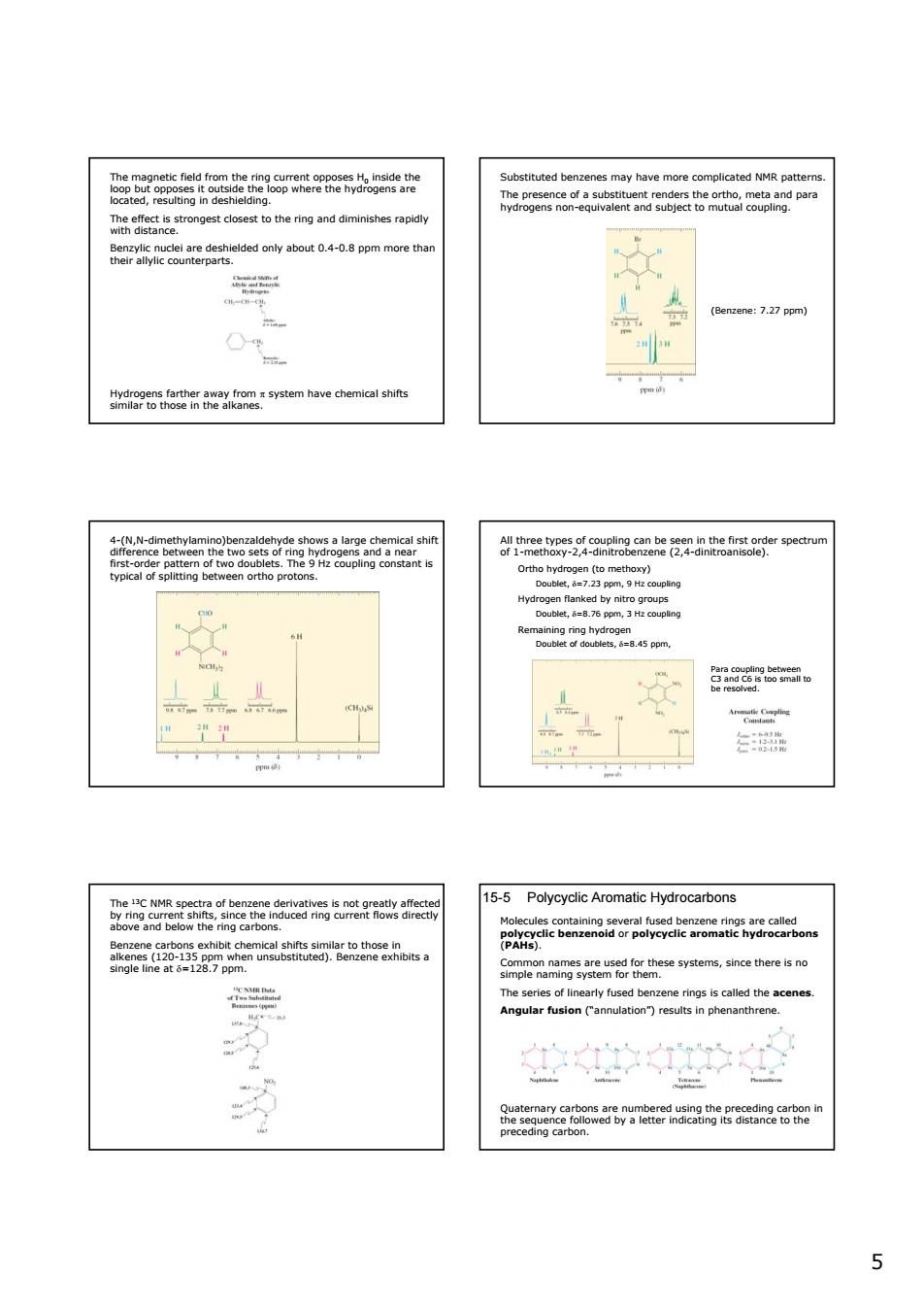正在加载图片...

bstituted ber theringand diminishes rapid (Benzene:7.27 ppm) hym have chemicash 1tmahPy2oaao2nhe2nhnteo6时rpe Ar Coepeg 32 15-5 Polycyclic Aromatic Hydrocarbons aled the ace Angular fusion (annulation")results in phenanthrene w8 5 5 The magnetic field from the ring current opposes H0 inside the loop but opposes it outside the loop where the hydrogens are located, resulting in deshielding. The effect is strongest closest to the ring and diminishes rapidly with distance. Benzylic nuclei are deshielded only about 0.4-0.8 ppm more than their allylic counterparts. Hydrogens farther away from π system have chemical shifts similar to those in the alkanes. Substituted benzenes may have more complicated NMR patterns. The presence of a substituent renders the ortho, meta and para hydrogens non-equivalent and subject to mutual coupling. (Benzene: 7.27 ppm) 4-(N,N-dimethylamino)benzaldehyde shows a large chemical shift difference between the two sets of ring hydrogens and a near first-order pattern of two doublets. The 9 Hz coupling constant is typical of splitting between ortho protons. All three types of coupling can be seen in the first order spectrum of 1-methoxy-2,4-dinitrobenzene (2,4-dinitroanisole). Ortho hydrogen (to methoxy) Doublet, δ=7.23 ppm, 9 Hz coupling Hydrogen flanked by nitro groups Doublet, δ=8.76 ppm, 3 Hz coupling Remaining ring hydrogen Doublet of doublets, δ=8.45 ppm, Para coupling between C3 and C6 is too small to be resolved. The 13C NMR spectra of benzene derivatives is not greatly affected by ring current shifts, since the induced ring current flows directly above and below the ring carbons. Benzene carbons exhibit chemical shifts similar to those in alkenes (120-135 ppm when unsubstituted). Benzene exhibits a single line at δ=128.7 ppm. 15-5 Polycyclic Aromatic Hydrocarbons Molecules containing several fused benzene rings are called polycyclic benzenoid or polycyclic aromatic hydrocarbons (PAHs). Common names are used for these systems, since there is no simple naming system for them. The series of linearly fused benzene rings is called the acenes. Angular fusion (“annulation”) results in phenanthrene. Quaternary carbons are numbered using the preceding carbon in the sequence followed by a letter indicating its distance to the preceding carbon